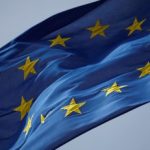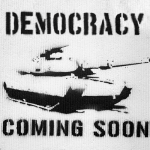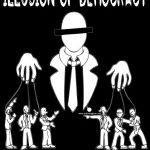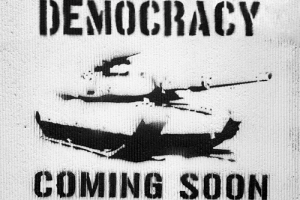“Pentru că a captat şi a subliniat dorinţa de a spera a unei întregi lumi, pentru că a îngenuncheat şi guverne, şi înţelepciunea convenţională, pentru că a combinat cele mai vechi tehnici cu cele mai noi tehnologii pentru a arunca o rază de lumina asupra demnităţii umane şi, în sfârşit, pentru că a consdus lumea pe calea democraţiei, deşi uneori periculoasa, a secolului XXI, Protestatarul este Omul Anului” (Rick Stengel – The Times)

Tunisia
A Tunisian demonstrator throws a rock during clashes between demonstrators and security forces on Jan. 10. Tunisia’s protests against unemployment, rising food prices, and autocratic government gained national momentum after the Jan. 4 death of Mohamed Bouazizi, a fruit-seller who had set himself on fire as an act of protest. Tunisia’s demonstrations not only led to the overthrow of longtime President Zine El-Abidine Ben Ali on Jan. 14, but inspired similar uprisings this year throughout the Middle East — and arguably, the world.

Egypt
Egyptian protesters celebrate under fireworks in Cairo’s Tahrir Square after President Hosni Mubarak stepped down on Feb. 11. After beginning as a Facebook-organized sit-in on Jan. 25, the Egyptian uprising grew into a full-scale occupation of central Cairo, unitingsecular and religious opposition groups. Despite an end to Mubarak’s 30-year rule, protestscontinue over what opposition groups see as the country’s new military rulers’ attempts to remain in power.

Libya
A Libyan man waves an old national flag as people celebrate outside the court house in the Eastern dissident-held city of Tobruk on Feb. 24. The protest movement against Muammar al-Qaddafi eventually transformed into an armed insurrection which, with considerable help from NATO air support, managed to overthrow the regime in August and bring the Libyan strongman to his bloody end on Oct. 20.

Syria
An image grab taken from a video uploaded to YouTube shows hundreds of Syrian anti-regime protesters rallying in Duma, a suburb of Damascus, following Friday noon prayers on Aug. 12. The United Nations estimates that more than 5,000 people have been killed during the Syrian uprising. Bashar al-Assad’s regime has tightly controlled reporting inside the country, including expelling foreign journalists, making images of the protests rare.

Yemen
A young Yemeni girl and her mother take part in a protest in Sanaa, on Oct. 26, following the killing of several women by security forces. Beginning in early February, Yemen’s anti-government protest movement devolved into bloody sectarian fighting between rival military factions. Last month, President Ali Abdullah Saleh signed an agreement stipulating that he would step down in Feb. 2012.

Bahrain
Anti-government protesters hoist a released political prisoner in the air in the Pearl Roundabout late on Feb. 22 in Manama. Bahrain’s government recently agreed to release dozens of political protesters and begin a “national dialogue” process following a harsh crackdown on nonviolent protesters. Unlike other countries in the region, the United States offered only tepid verbal support for the democracy movement in Bahrain, which hosts a major U.S. naval installation.

Morocco
An Islamist protester attends a demonstration on March 20 in Rabat, calling for further democratic reforms and social justice. Mindful of the upheavals in other North African countries this year, the Moroccan monarchy announced major reforms, including an elected prime minister.

Algeria
Students clash with security forces during a demonstration in Algiers on May 2. Although it was one of the first Arab countries, along with Tunisia, to see major street demonstrations this year demanding government action on unemployment and food prices, the movement has largely fizzled out as Abdelaziz Bouteflika’s government clamped down hard on dissent.

Jordan
Islamist women participate in an anti-government rally on July 8 in Amman. Protests have been relatively small compared to other countries in the region, but prompted King Abdullah II to reshuffle his cabinet in an effort to appease the opposition.

Kuwait
Protesters storm the National Assembly building in Kuwait City on Nov. 16, while hundreds more demonstrate outside. Kuwait’s protest movement has been relatively small — thanks partially to generous welfare payments handed out by the government — but the storming of the Assembly building prompted the country’s emir to dissolve parliament and promise additional reforms.

Iran
An image grab taken from a video posted to You Tube allegedly shows Iranian police arresting and beating an Iranian opposition protester in Tehran on Feb. 11. While voicing support for the movements that toppled pro-U.S. dictatorships in Egypt and Tunisia, the Iranian regime cracked down hard on domestic activists inspired by the Arab Spring and imposed a near-total information blackout on coverage of protests in Tehran.

Turkey
Kurdish protesters in Istanbul run through clouds of tear gas during clashes with riot policemen on June 26. This summer’s demonstrations, though partially inspired by the events of the Arab Spring, were the latest in a years-long tradition of protests by Kurdish opposition groups.

Israel
Israelis march to protest rising housing prices and social inequality in Tel Aviv on July 30. Tens of thousands of Israelis took to the streets in 10 cities across the country, including hundreds who set up camps in Tel Aviv to protest the government’s economic policies.

West Bank
Members of Hamas’ security forces prevent Palestinian protesters from reaching the Erez border crossing with Israel in the northern Gaza Strip on June 5. Major protests were held throughout the Palestinian territories this year marking the 44th anniversary of the Six-Day War.

India
Supporters of anti-corruption activist Anna Hazare protest outside Congress Party General Secretary Rahul Gandhi’s residence in New Delhi on Aug. 26. Hazare began his hunger strike against government corruption on April 5, prompting mass demonstrations in cities throughout India and eventually pressuring Parliament to pass new anti-corruption legislation.

Pakistan
Pakistani politician and former cricket star Imran Khan addresses a rally in Lahore on Oct. 30. Thousands gathered to demand President Asif Ali Zardari step down over corruption charges and his government’s close ties to Washington.

United States
Members of the Occupy L.A. movement sit in the street after marching downtown on Nov. 17 in Los Angeles, California. The Occupy Wall Street (OWS) movement began in New York’s Zucotti Park in September as a protest against rising income inequality and the power of corporations. The “99 percent” movement spread to cities throughout the country and inspired similar actions abroad. Most of the OWS encampments, including New York and Los Angeles, have now been cleared by police, generating controversy over what many saw as excessive use of force.

Spain
Thousands of demonstrators gather on the Puerta del Sol square in central Madrid on May 29 during a protest to decry mainstream political parties, soaring unemployment, corruption, and welfare cuts. The “indignants” protest began in mid-May in cities throughout the country. Central Madrid was occupied by an indignants tent city for nearly a month. Periodic protests have continued, often coordinated with global “occupy” events.

Greece
protesters face off against riot police on June 15 during a demonstration in front of the parliament building in central Athens. It was another year of harsh austerity measures and humiliating bailouts for Greece, culminating in the resignation of Prime Minister George Papandreou on Nov. 11. Throughout the year, trade unions and leftist groups repeatedly took to the streets, shutting down the capital to protest the government’s actions.

Iceland
People demonstrate outside the Icelandic parliament in Reykjavik on Oct. 3. Popular anger ran high over the country’s financial collapse, and an Icelandic court this year said it would hear a political negligence case against former Prime Minister Geir Haarde for his role in the 2008 financial crisis.

Britain
Protesters set up tents before being cleared by police in Trafalgar Square, as students took part in a demonstration against higher tuition fees and privatization in universities on Nov. 9. This year’s actions followed London’s student protests of 2010 and merged with the broader goals of the Occupy Wall Street movement. Occupy London events, including a recent “villain’s tour” of the Canary Wharf financial district, are ongoing.

Netherlands
Protesters burn fake U.S. bills as they camp in front of the stock exchange building in Amsterdam on Oct. 17 as part of Europe-wide anti-capitalist demonstrations inspired by the Occupy Wall Street movement.

Belgium
People dressed as Socialist leader Elio Di Rupo, paying homage to his signature bow tie, pose during a demonstration by Belgian unions against the new government’s austerity measures in Brussels on Dec. 2. After 541 days without a government, Belgium’s linguistically divided political factions finally formed a coalition on Dec. 12, swearing in Di Rupo as president.

Italy
A man stands by a car on fire during a demonstration in Rome on Oct. 15. While OWS-inspired protests were held in over 80 countries that day, Italy was the only one with widespread violence, much of it perpetrated by the anarchist Black Bloc group. Amid a swarm of personal scandals and an ongoing financial crisis, Prime Minister Silvio Berlusconi stepped down on Nov. 16, making way for an EU-approved “technocratic” government under new Prime Minister Mario Monti that has promised sweeping austerity measures and balanced budgets.

Belarus
Plain-clothes policemen detain an activist in central Minsk,where several hundred people gathered on July 20, answering appeals spread on the Internet to hold “clapping” rallies on Wednesday nights. Hundreds were arrested at the rallies, which were held weekly over the summer to protest President Aleksandr Lukashenko’s autocratic rule.

Ukraine
Activists of the FEMEN group, (partially) dressed as Ukrainian opposition leader Yulia Tymoshenko, scatter symbolic dollars during their performing protest in central Kiev on June 20. Founded in 2008 by a group of Kiev university students to protest sexual assault and prostitution, the topless activists have lately attached themselves to variety of causes in Ukraine and throughout Europe. Tymoshenko was convicted this year on corruption charges, a prosecution that many saw as politically motivated.

Albania
Albanian opposition lawmaker Timo Lutaj jumps over the police line on May 18 as he tries to enter the Central Election Commission in Tirana to protest against the delay in the release of results from May 8 local elections. Protests swept through the capital, following over a year of disputes over alleged fraud in the 2009 parliamentary elections.

Mexico
People with their faces painted as skulls demonstrate against rampant violence in Mexico City on Nov. 27. Thousands participated in a march to the capital this year to protest the Mexican government’s drug policies, led by poet Javier Sicilia, whose son was killed earlier this year.

Cuba
Members of the opposition group Ladies in White march during the procession of the Virgin of Charity on Nov. 12 in Havana. The group’s membership consists of wives and relatives of imprisoned dissidents. They hold weekly processions, walking through Havana dressed in white to protest government crackdowns on free speech.

Haiti
Men wearing flags representing the United Nations and countries with past and present interests in Haiti carry a coffin draped in a Haitian flag with a placard reading “What Life” past the national palace during the first day of the Port-au-Prince Carnival celebration on March 6. Major protests were held against the U.N. presence in Haiti this year over reports that foreign peacekeepers introduced a deadly cholera epidemic to the earthquake-ravaged country.

Nicaragua
Opponents of Nicaraguan President Daniel Ortega dance during a protest against his reelection in Managua on Sept. 20. The former Sandinista revolutionary amended the country’s constitution in order to allow himself to run for another term and was eventually reelected, despite widely reported voting irregularities.

Venezuela
University students on a hunger strike protesting the government of Venezuelan President Hugo Chávez, in Caracas on Feb. 19. More than 50 students around the country began the strike in February to highlight the abuses suffered by anti-government activists in prison in Venezuela. The strike ended after 23 days when the government agreed to release seven political prisoners.

Bolivia
Amazonian natives occupy the Plaza de Armas square in La Paz on Oct. 20 at the end of a two-month march from the Amazon, protesting a government plan to build a highway through their ancestral homeland. President Evo Morales, who as Bolivia’s first indigenous president has often drawn his strongest support from this traditionally marginalized group, offered to hold direct talks with the almost 2,000 marchers.

Brazil
People hold brooms during a protest against corruption at the Cinelanida Square in Rio de Janiero on Sept. 20. The protests followed President Dilma Rousseff’s fourth dismissal of a minister for corruption. The protesters also placed 594 brooms — representing Brazil’s members of congress and senators — on the famous Copacabana Beach.

Chile
Students kiss during a July 6 “Kiss Party” to protest the Chilean education system in Santiago. The Chilean student protests, which have been going on since May and at times have involved over 100,000 students at mass rallies, were sparked by demands for the construction of more public universities, as well as opposition to President Sebastian Pinera’s plans to privatize parts of the Chilean education system.

Sudan
Sudanese riot police hold shields during a day of nationwide student protests on Jan. 30. It’s been a difficult year for Sudanese President Omar al-Bashir, who has faced domestic protests over democracy and rising prices, as well the independence of breakaway South Sudan.

Somalia
Somalis demonstrate on April 7 in the embattled capital Mogadishu against a U.N.-proposed consultative meeting with the Transitional Federal Government. The internationally backed government is currently fighting for control of the country with Shabaab militants in the country’s south. This year also saw government-sponsored demonstrations against Shabaab in Mogadishu.

Liberia
An opposition party supporter chants a slogan next to Liberian police and U.N. peacekeeping forces during a protest in Monrovia on Nov. 7. The next day, incumbent president and newly minted Nobel Peace Prize laureate Ellen Johnson Sirleaf would be reelected for a second term. At least one person was killed and more injured in protests against alleged voting fraud.

Senegal
Protesters march in the streets of Dakar as record numbers turned out to demand Senegal’s 85-year-old President Abdoulaye Wade abandon plans to run for a third term next year, which opponents say is unconstitutional. In response to the protests, which included a Middle East-style self-immolation, Wade agreed to abandon plans to amend the constitution to create the position of vice president, which opponents say would have allowed him to groom his son as a successor.

Democratic Republic of the Congo
A supporter of the opposition Union for Democracy and Social Progress party runs from tear gas after a demonstration march was dispersed by police in Kinshasa, on Oct. 6. International observers say this year’s elections were widely marred by fraud and violence, and many opposition supporters still have not accepted President Joseph Kabila’s reelection.

Uganda
A Ugandan military officer disperses supporters of opposition leader Kizza Besigye, who had gathered in large numbers to welcome him back to Kampala from Nairobi on May 12. Besigye, a runner up in the last three presidential elections, had gone abroad to seek medical care after he was injured by security forces while protesting long-serving President Yoweri Museveni’s government this year.

South Africa
Supporters of African National Congress Youth League leader Julius Malema sing outside a courthouse in Johannesburg on Sept. 12. The court found Malema guilty of hate speech for singing an anti-apartheid anthem whose lyrics translate to “Shoot the Boer.” In defiance of a court order, his supporters began singing the song outside his trial.

Myanmar
Monks in Mandalay listen to a speech during a protest calling for the release of all political prisoners on Nov. 16. This year saw landmark reforms from Myanmar’s military junta, including allowing opposition leader Aung San Suu Kyi’s party to run in elections next year. In a historic trip, U.S. Secretary of State Hillary Clinton visited the country in late November to urge continued reforms.

Thailand
Nationalist “yellow shirt” protesters wave national flags during a demonstration outside the UNESCO building in Bangkok on June 22.The protesters demanded UNESCO remove the Preah Vihear temple from its list of World Heritage sites. Thailand and Cambodia are locked in a bitter dispute over their shared border that has seen 28 people killed in two outbreaks of fierce fighting this year. The movement was dealt a major blow this year with the election of new Prime Minister Yingluck Shinawatra, who is supported by the rival “red shirt” movement, which shut down central Bangkok with mass demonstrations last year.

Japan
An anti-nuclear demonstration outside the headquarters of the Tokyo Electric Power company in Tokyo on Nov. 6. The protesters demanded the company take more action to restore Fukushima, following a nuclear meltdown caused by a massive earthquake and tsunami on March 16.

Philippines
Anti-riot policemen clash with student protesters as they try to march to the Malacanang Palace in Manila on Dec. 7. The protest was inspired by the global Occupy Wall Street movement.

Malaysia
More than 10,000 protesters take part in a mass rally calling for electoral reform in front of the iconic Petronas Towers in Kuala Lumpur on July 9. Police arrested more than 1,600 people in the process of breaking up the unauthorized rally. Street protests are extremely rare in Malaysia.

Australia
Signs are displayed during an Occupy Melbourne protest on Oct. 15. Protesters across the Asia-Pacific region joined in the global OWS demonstrations in October.

China
Onlookers watch cars burning after hundreds of residents rioted along the main road in Xintang town, a denim garment district in Guangzhou province. Hundreds of people rioted in June in southern China after rumors spread on the Internet that police beat a street hawker to death. While the Chinese government has cracked down hard on signs of dissent both online and in the streets following the Arab spring, confrontations between villagers and authorities over land seizures continued to spread toward the end of the year.

Russia
A policeman detains an opposition supporter during a rally in central Moscow on Dec. 5. Thousands rallied in December during Russia’s largest opposition demonstrations since the fall of the Soviet Union, protesting against electoral fraud and violations in legislative elections that handed victory to Vladimir Putin’s United Russia party.
source: foreignpolicy.com












România ???
Romania mananca mici si fasole cu carnat…